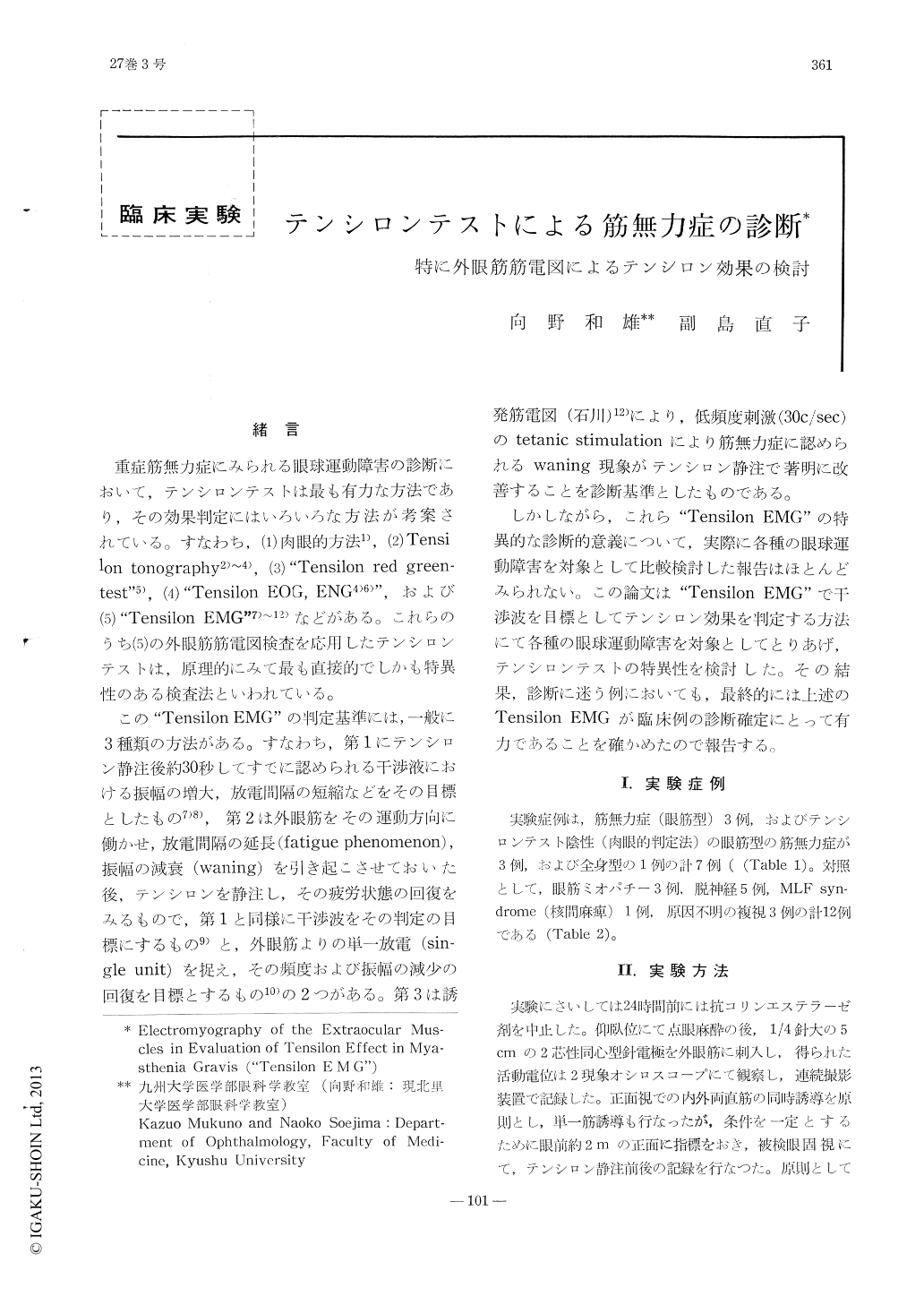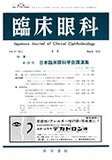Japanese
English
- 有料閲覧
- Abstract 文献概要
- 1ページ目 Look Inside
緒言
重症筋無力症にみられる眼球運動障害の診断において,テンシロンテストは最も有力な方法であり,その効果判定にはいろいろな方法が考案されている。すなわち,(1)肉眼的方法1),(2) Tensi1lon tonographyd2)〜4),(3)"Tensilon red green—test"5),(4)"Tensilon EOG, ENG4)6)",および(5)"Tensilon EMG"7)〜12)などがある。これらのうち(5)の外眼筋筋電図検査を応用したテンシロンテストは,原理的にみて最も直接的でしかも特異性のある検査法といわれている。
この"Tensilon EMG"の判定基準には,一般に3種類の方法がある。すなわち,第1にテンシロン静注後約30秒してすでに認められる干渉液における振幅の増大,放電間隔の短縮などをその目標としたもの7)8),第2は外眼筋をその運動方向に働かせ,放電間隔の延長(fatigue phenomenon),振幅の減衰(waning)を引き起こさせておいた後,テンシロンを静注し,その疲労状態の回復をみるもので,第1と同様に干渉波をその判定の目標にするもの9)と,外眼筋よりの単一放電(sin—gle unit)を捉え,その頻度および振幅の減少の回復を目標とするもの10)の2つがある。
The value of electromyography in monitoring the effect of Tensilon (edrophonium chloride) on the extraocular muscles in the diagnosis of myasthenia gravis has been examined.
A group of 7 myasthenic patients, of whom 3 were positive by standard (inspective) Ten-silon test and the other 4 were equivocal by standard and "Tensilon red-green test", exhibited apparent restoration of frequency and amplitudeof action potenials (interference pattern) within 30 sec. to 1 min. after the Tensilon injection (5 mg). When the restoration is observed, the test is regarded as positive.

Copyright © 1973, Igaku-Shoin Ltd. All rights reserved.


